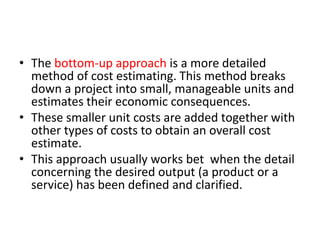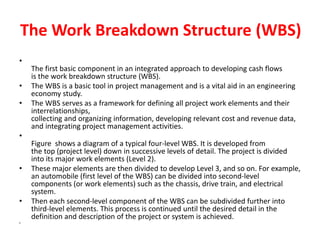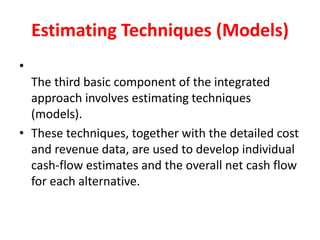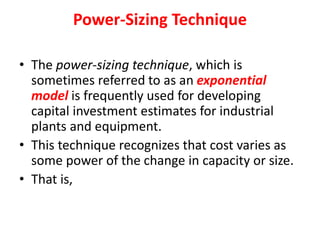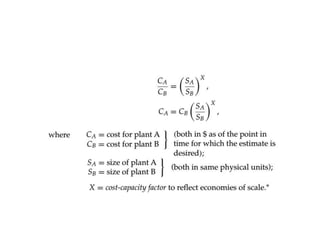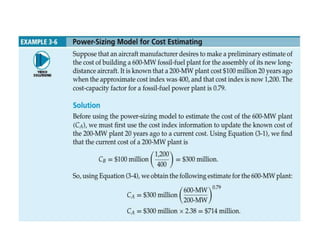This document discusses techniques for cost estimation. It describes the top-down and bottom-up approaches to cost estimation, with the top-down approach using historical data from similar projects and the bottom-up approach breaking a project down into smaller units. An integrated approach is presented that uses a work breakdown structure, cost/revenue structure, and estimating techniques/models. Common sources of cost estimation data are also outlined such as accounting records, sources within and outside a company, research and development, and the internet.




